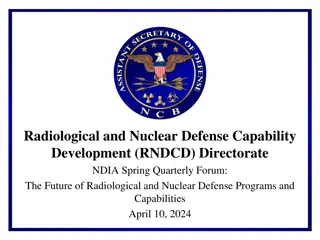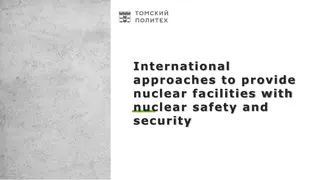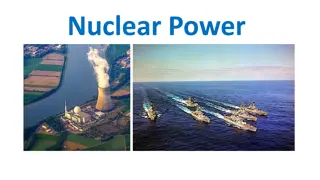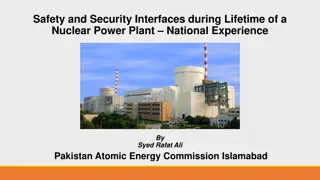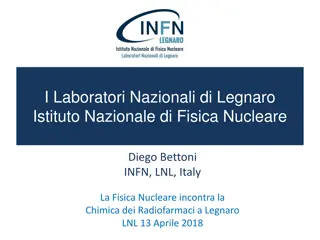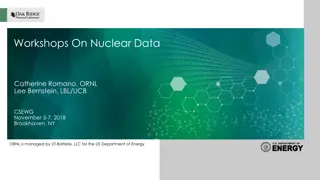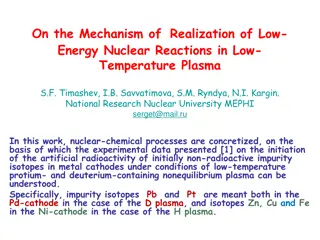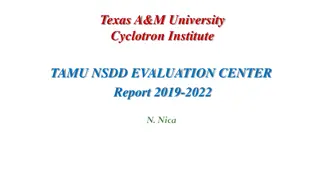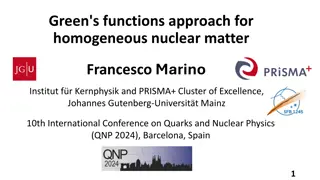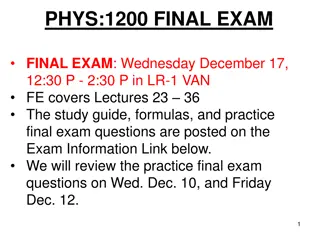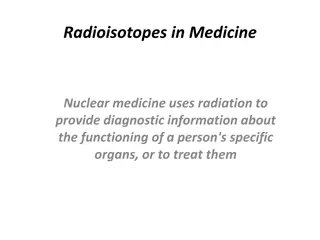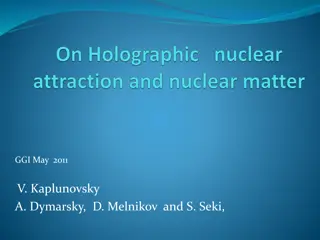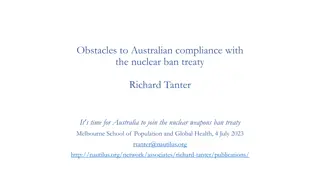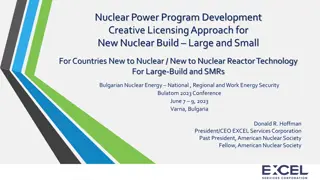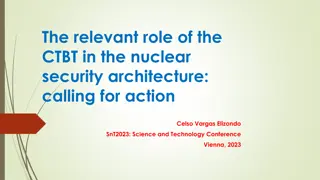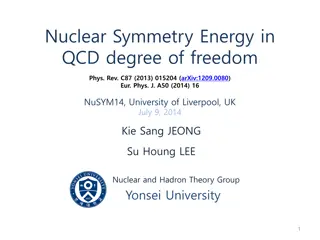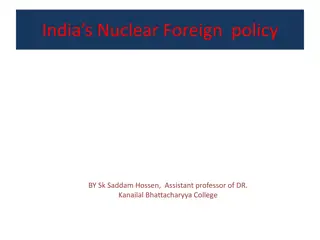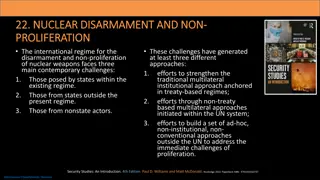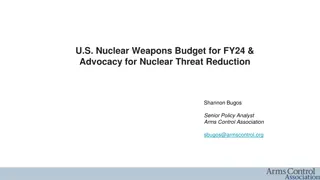NUCLEAR CHEMISTRY
Discover the fascinating world of nuclear chemistry with insights on alpha and beta decay, isotopic production, half-life concepts, and nuclear equation problem-solving. Explore the processes of natural decay, bombardment of atoms, and radioactive isotopes production. Learn about examples of radioactive isotopes with varying half-lives and solve problems related to decay and original sample amounts. Unveil the secrets of nuclear equations and understand the dynamics of radioactive elements.
Download Presentation

Please find below an Image/Link to download the presentation.
The content on the website is provided AS IS for your information and personal use only. It may not be sold, licensed, or shared on other websites without obtaining consent from the author.If you encounter any issues during the download, it is possible that the publisher has removed the file from their server.
You are allowed to download the files provided on this website for personal or commercial use, subject to the condition that they are used lawfully. All files are the property of their respective owners.
The content on the website is provided AS IS for your information and personal use only. It may not be sold, licensed, or shared on other websites without obtaining consent from the author.
E N D
Presentation Transcript
Beta decay 234Th 90 234Pa + 0e 91 1 beta particle
Problems: Write the nuclear equation for the natural decay of Co-60.
Producing Radioactive Isotopes Bombardment of atoms produces radioisotopes = 60 59Co + 1n ? 27 0 = 60 56Mn + 4He 25 2 = 27 = 27 cobalt neutron manganese alpha atom radioisotope particle
Problems: Write the nuclear equation for the bombardment of Calcium 40 with a positron, forcing the emission of an alpha particle as one of the products.
Half-Life of a Radioisotope - the time required for half the mass of a sample of atoms of a radioactive nuclide to decay - USEFUL HALF-LIVES CAN BE FOUND ON TABLE N** # of half lives occurred = T/t Where T= total time t= half life
Examples of Lives Francium 220 27.5 s Fe 53 8.51 min 42K 12.4 h 131I 8.07 d Strontium 90 28.1 y U 238 4.51 x 109y
Half-Life of a Radioisotope decay curve initial 1 half- life 2 3 8 g 1/1 4 g 2 g 1 g 1/8
Half-Lives In order to solve these problems a table like the one below is useful, the first two columns are constant, the last two you fill in with the problem s data. PRACTICE: For instance, with 40 grams of an original sample of Radium -226 and we want to find out how much is left 8000 years. life period % original remaining 100 50 25 12.5 6.25 3.125 Time Elapsed 0 Amount left 0 1 2 3 4 5
Problem: What is the fraction of I -131 remaining after 32.3 days ?
Problem: What is the original amount of a sample of Hydrogen 3 if after 36.8years 2.0g are left ?
Problem: How many life periods have passed if a sample has decayed to 1/16 of its original amount?
Phosphorus-32 has a half-life of 14.3 days. How many grams of phosphorus- 32 remain after 57.2 days if you start with 4.0 g of the isotope?
Problem: What is the life of a sample if after 40 years 25 grams of an original 400 gram sample is left ?
Nuclear Fission Fission Atomic Bomb large nuclei break up https://www.history.com/embed/21097602# 235U + 1n 139Ba +94Kr + 3 1n + 92 0 56 36 0 En erg y
Nuclear Fusion Fusion small nuclei combine En er gy 2H + 3H 4He + 1n + 1 1 2 0 Occurs in the sun and other stars
Problems: Indicate if each of the following are (1) Fission (2) fusion En er gy A. Nucleus splits B. Large amounts of energy released C. Small nuclei form larger nuclei D. Hydrogen nuclei react
Nuclear Power Plants They have five main components: shielding, fuel, control rods, moderator, and coolant. 1. Shielding: Concrete and Steel: is radiation-absorbing material that is used to decrease exposure to radiation, especially gamma rays, from nuclear reactors. 2. Fuel Rods - Uranium-235 is typically used as the fission fuel.
3. Coolant: Water or Heavy Water - The coolant absorbs the energy as heat that is produced 4. Control rods: cadmium or boron: are neutron- absorbing rods that help control the reaction by limiting the number of free neutrons 5. Moderator: Graphite or beryllium: is used to slow down the fast neutrons produced by fission.
Uses of Radioactivity Radioactive dating is the process by which the approximate age of an object is determined based on the amount of certain radioactive nuclides present. Carbon-14 is used to date organic things that were once alive. Uranium-238 is used to geologically date rocks Radioactive Nuclides in Medicine cobalt-60 - In medicine, radioactive nuclides are used to destroy certain types of cancer cells.
Iodine-131 is used to detect and treat thyroid disorders Tc-99 is given to patients with cancerous tumors. It accumulates in the tumor and can be easily detected by a scan. Radioisotopes used in the body must have a short half life so they are quickly eliminated from the body. Radioactive Nuclides in Agriculture Phosphorus-31 - Radioactive tracers in fertilizers are used to determine the effectiveness of the fertilizer. Gamma radiation from Co-60 is used to prolong the shelf life of food. The gamma radiation kills bacteria. This form of preservation is used on many spices and some meats. Cs-137 along with Co-60 are used to destroy Anthrax.
Radiation Risks Biological Damage (possible gene mutations) Long-Term Storage Accidents Pollution Why is Sr-90 bad to ingest?
Important Points Nuclear equations Transmutations Tables N and O Lives Risks Tracers Parts of a Nuclear Reactor and their functions




